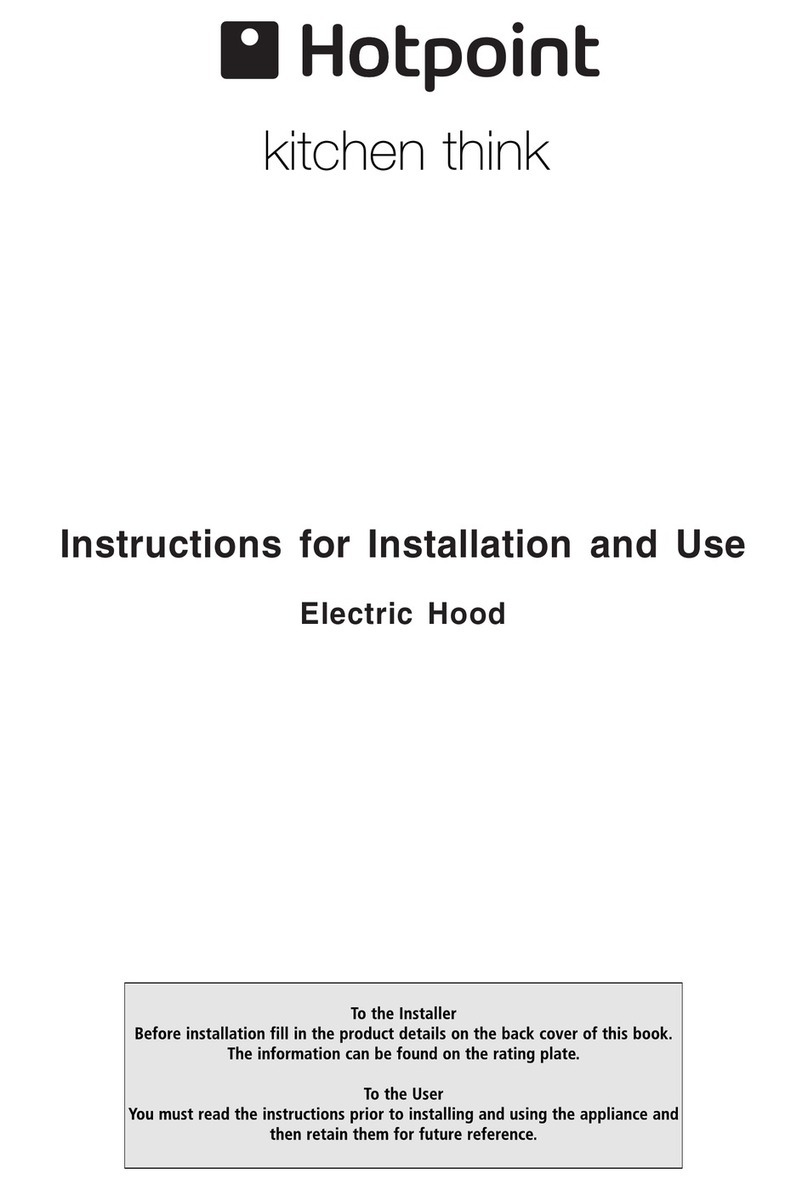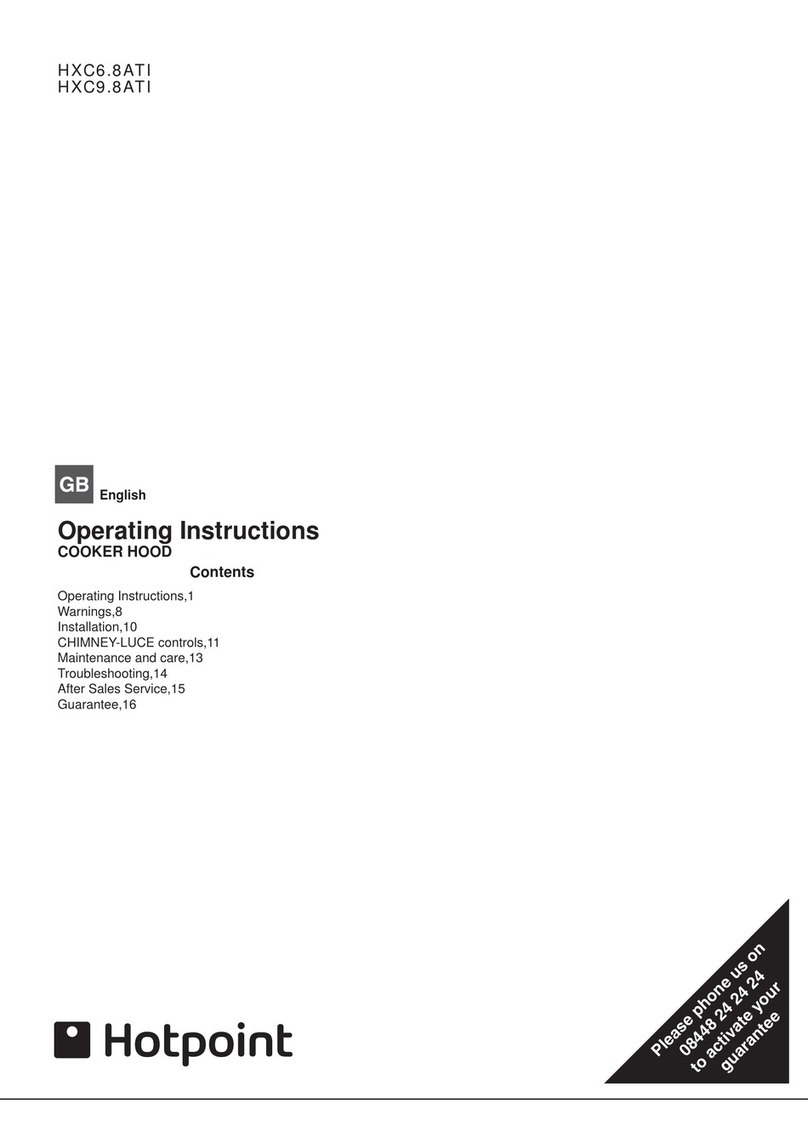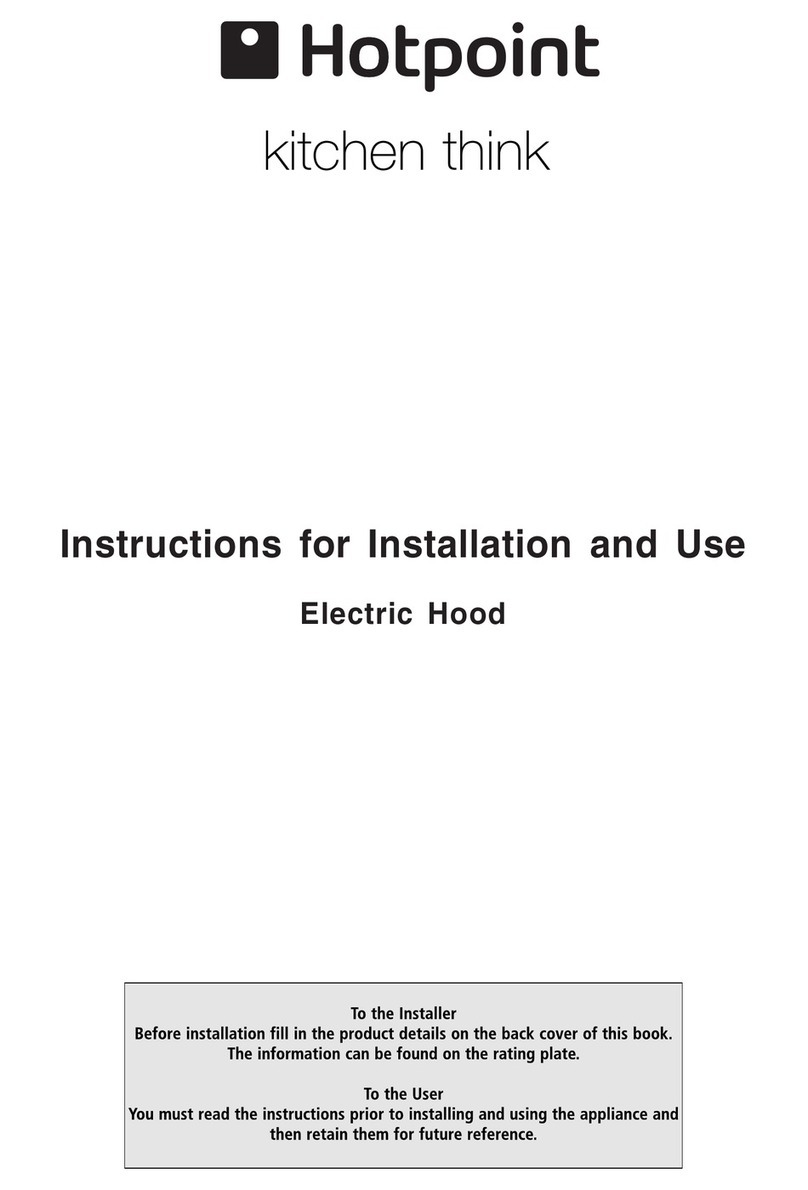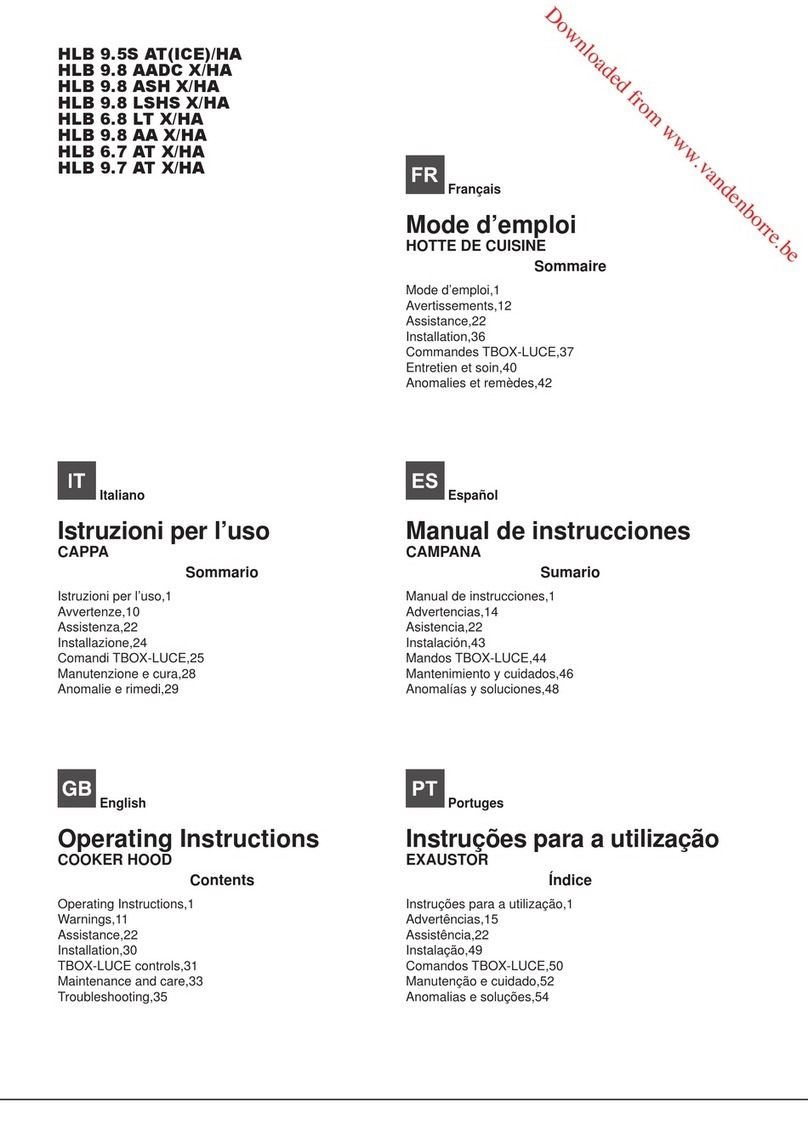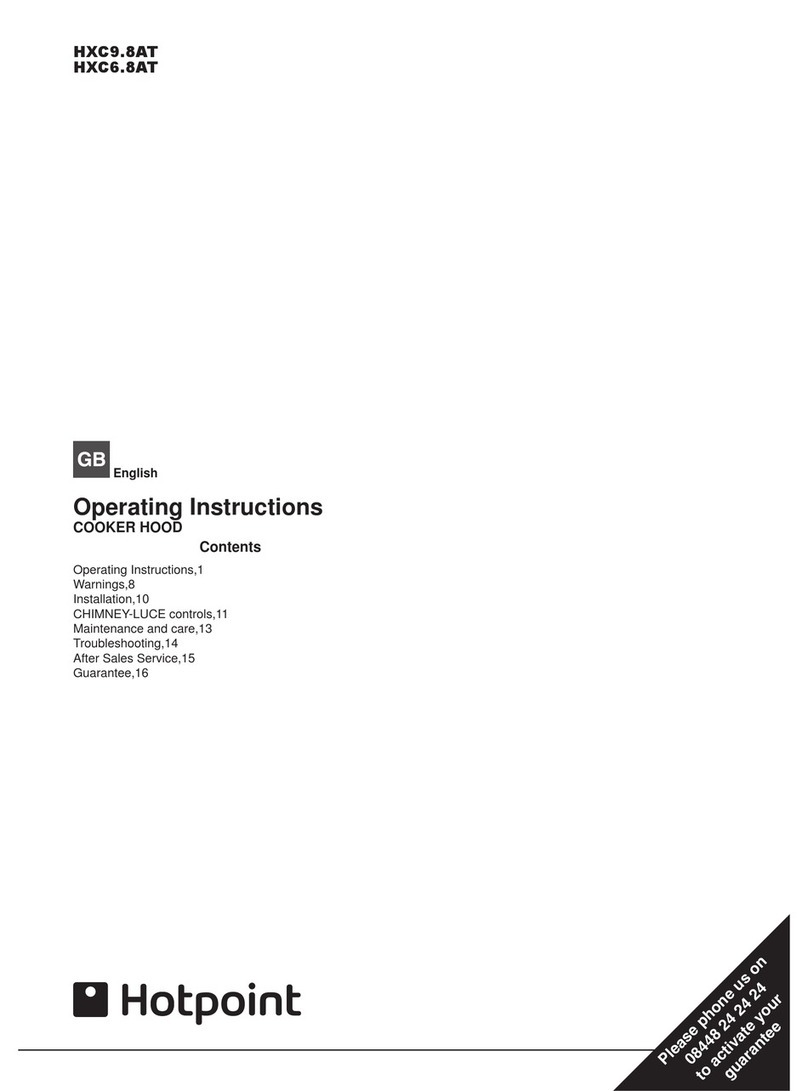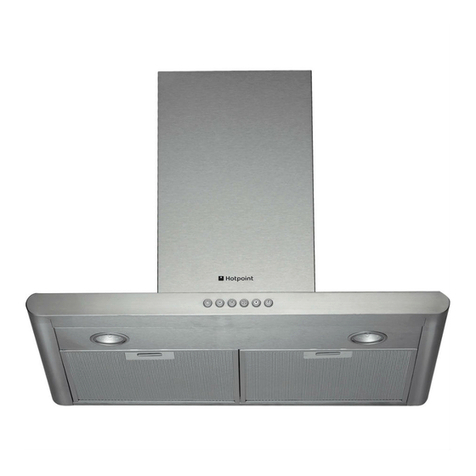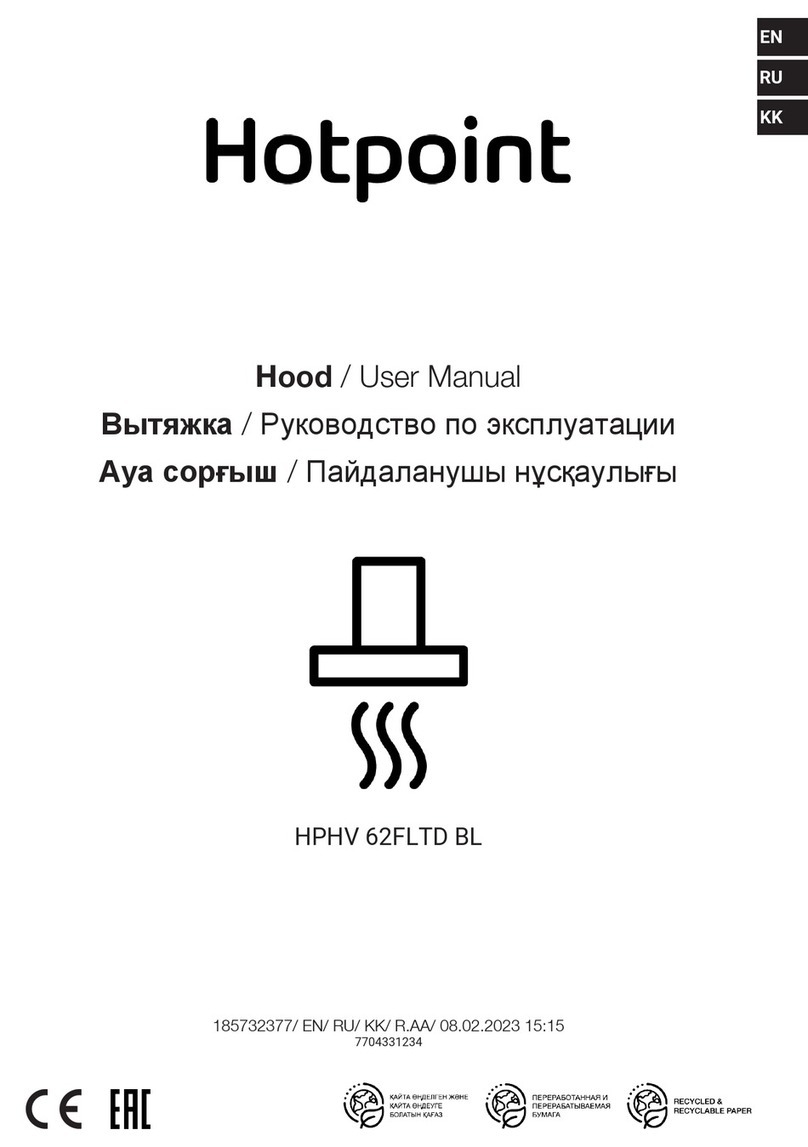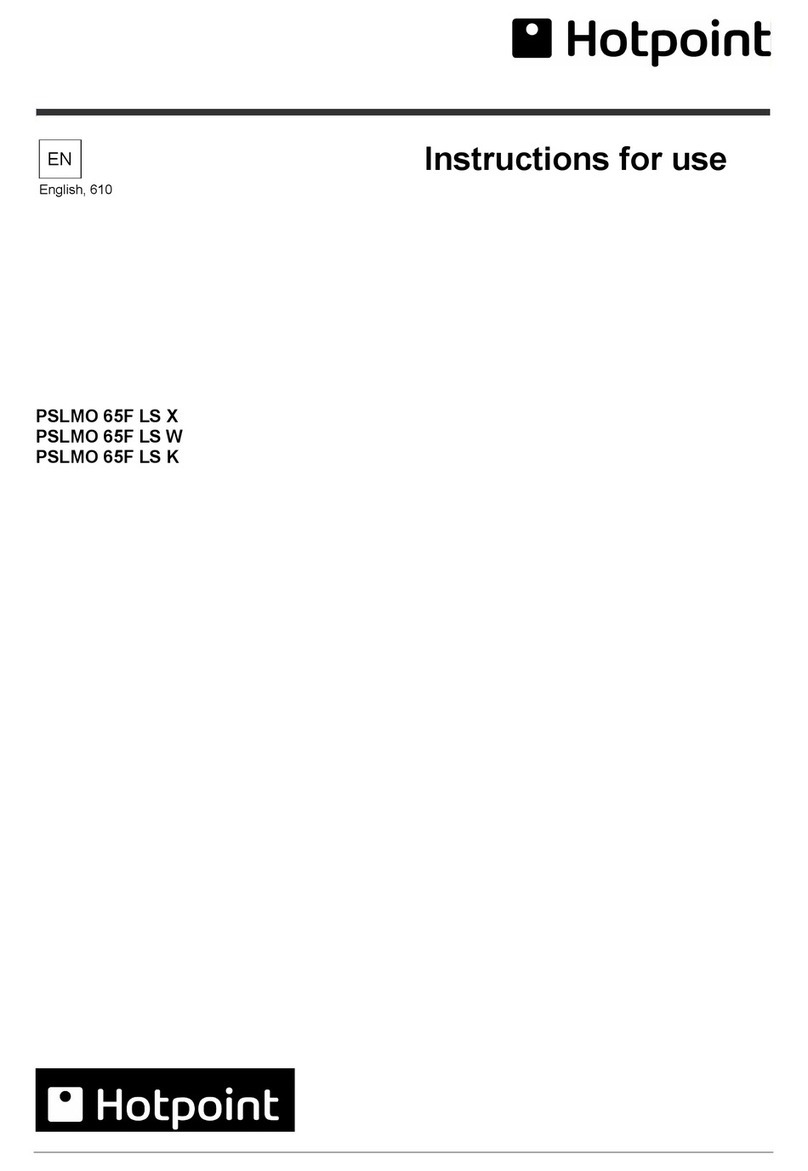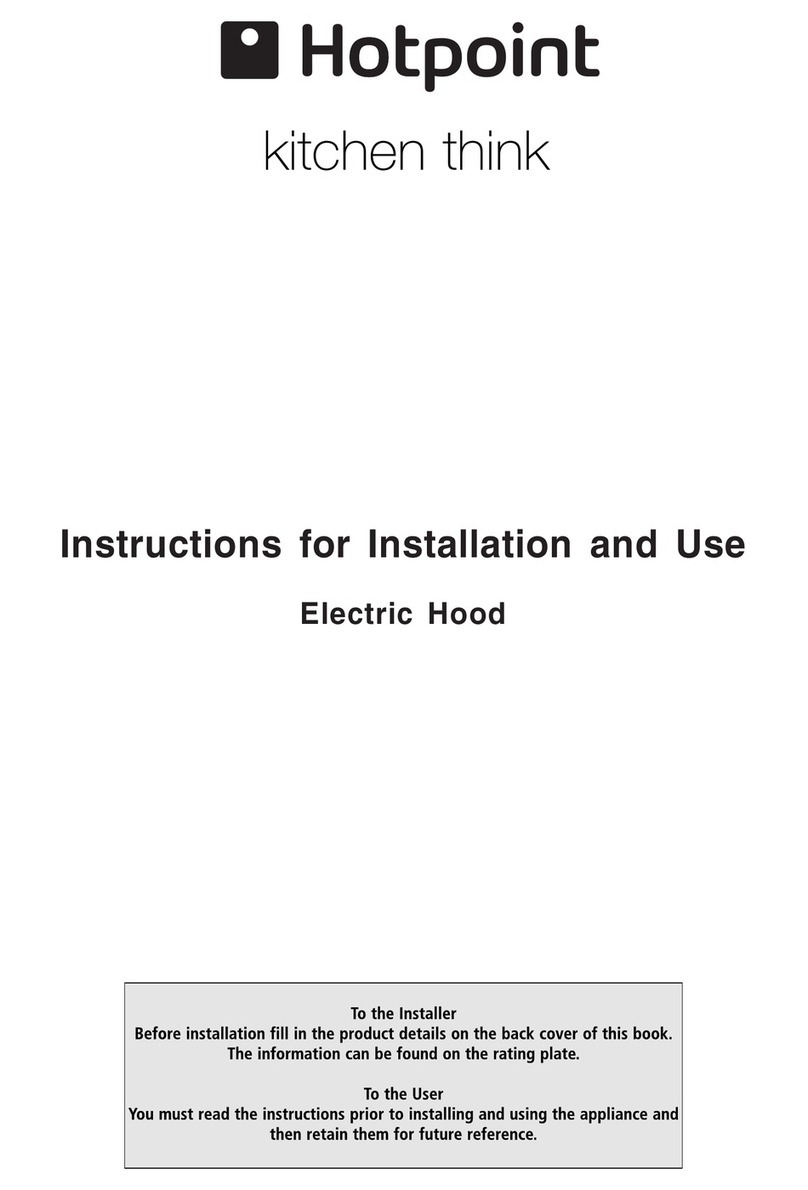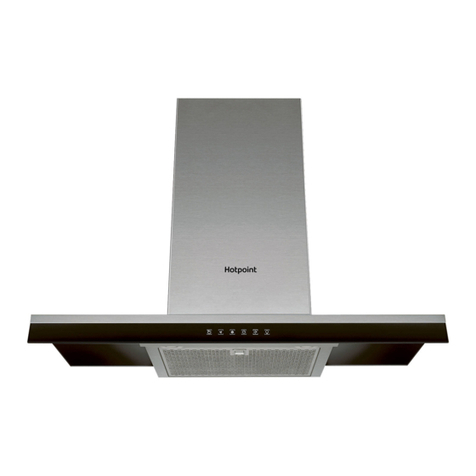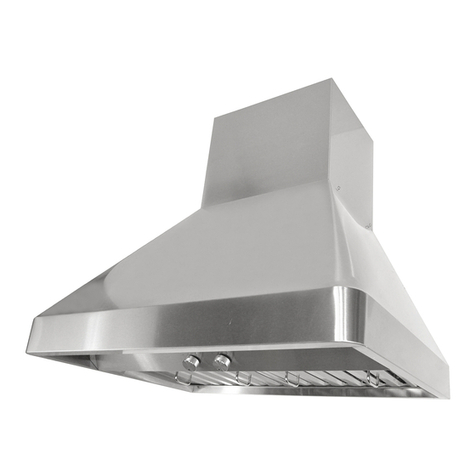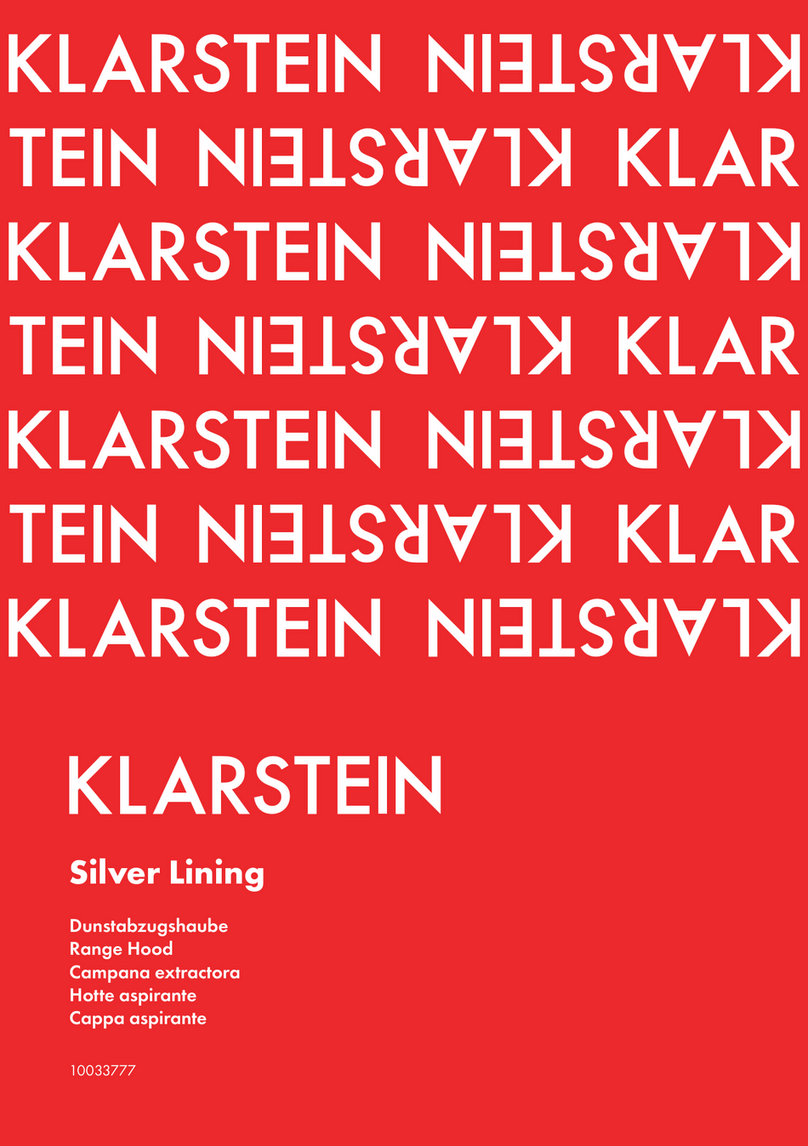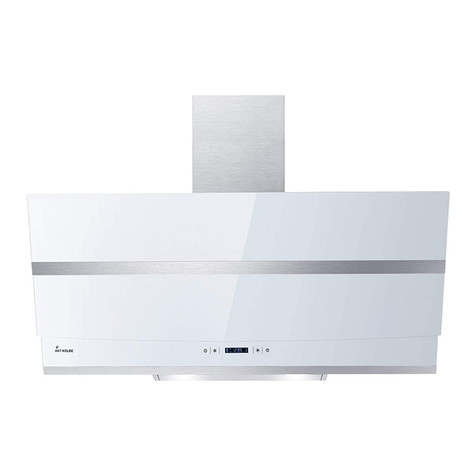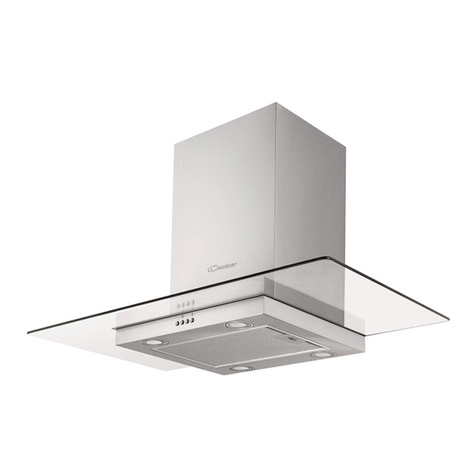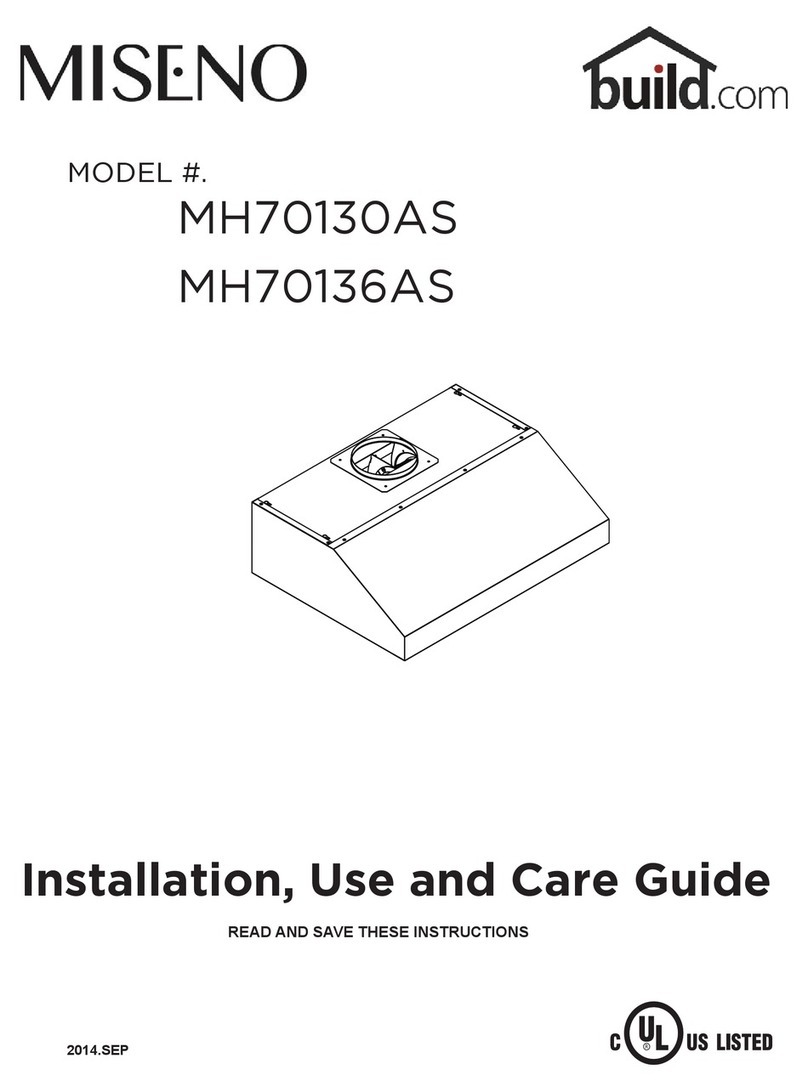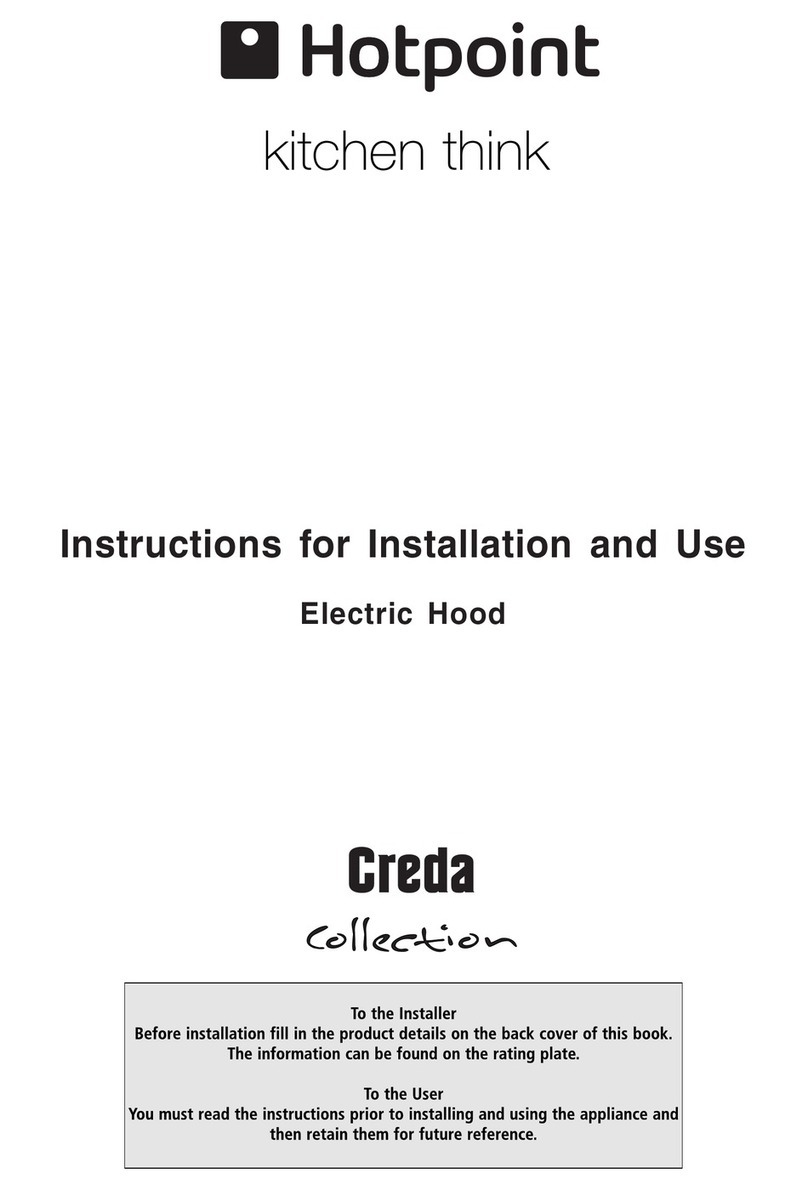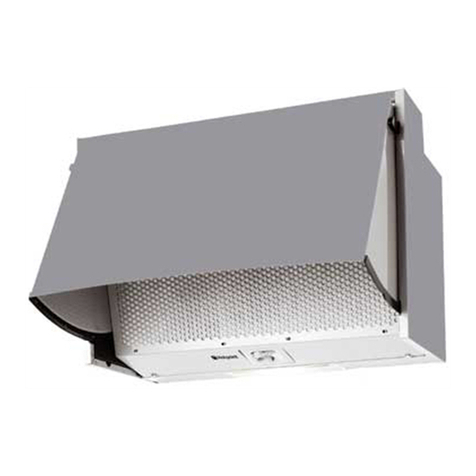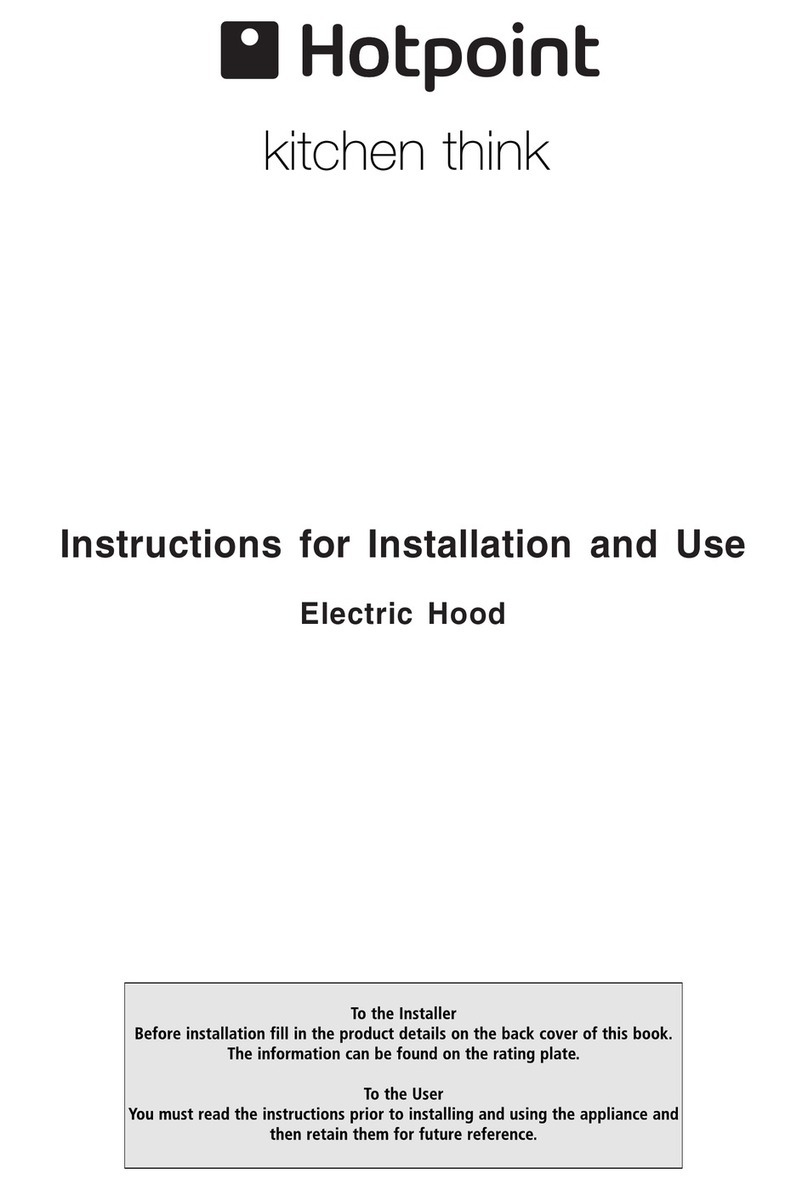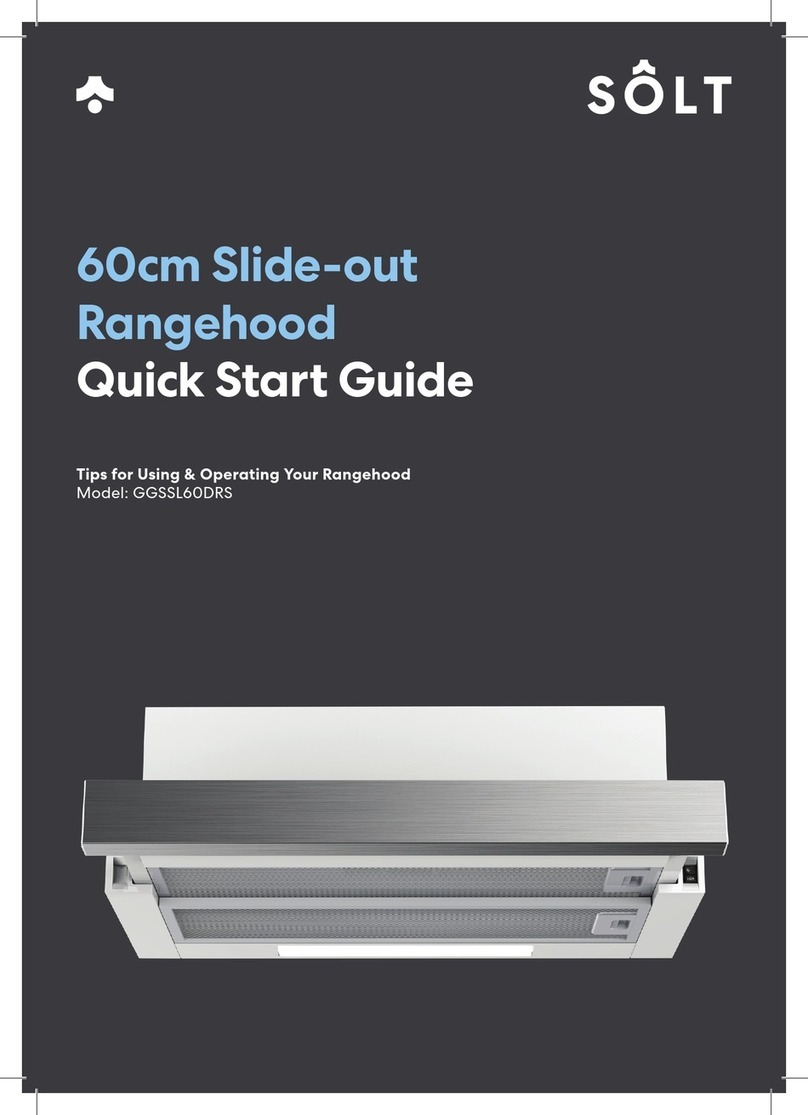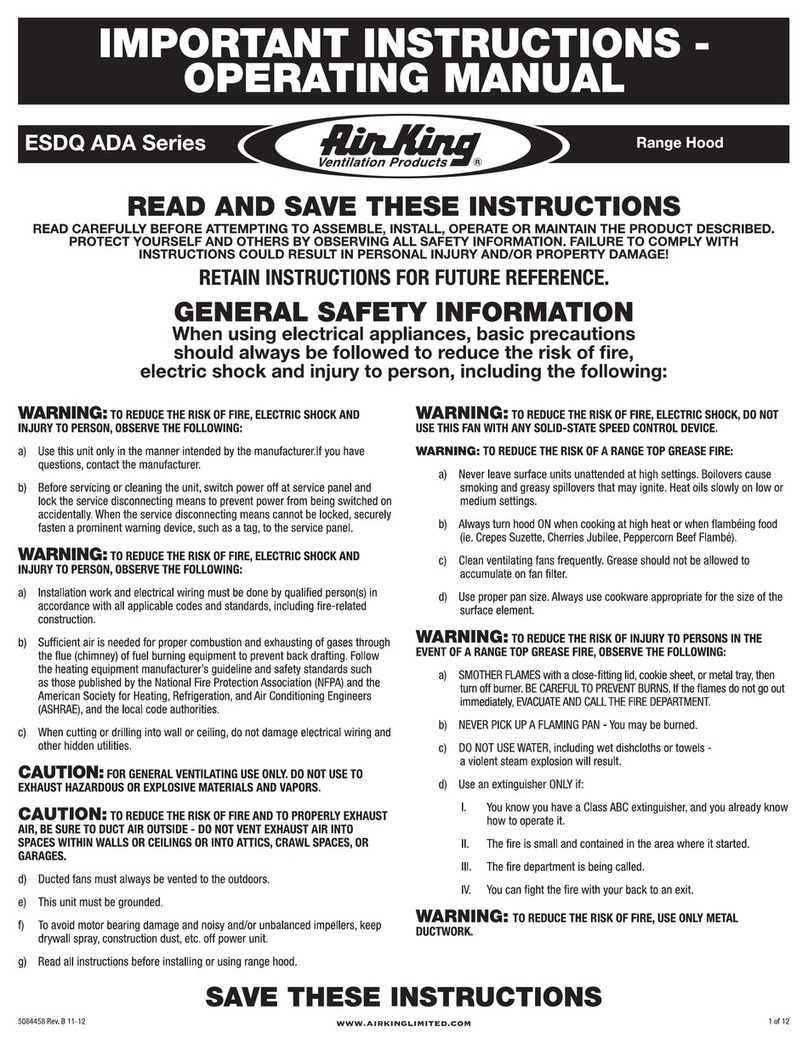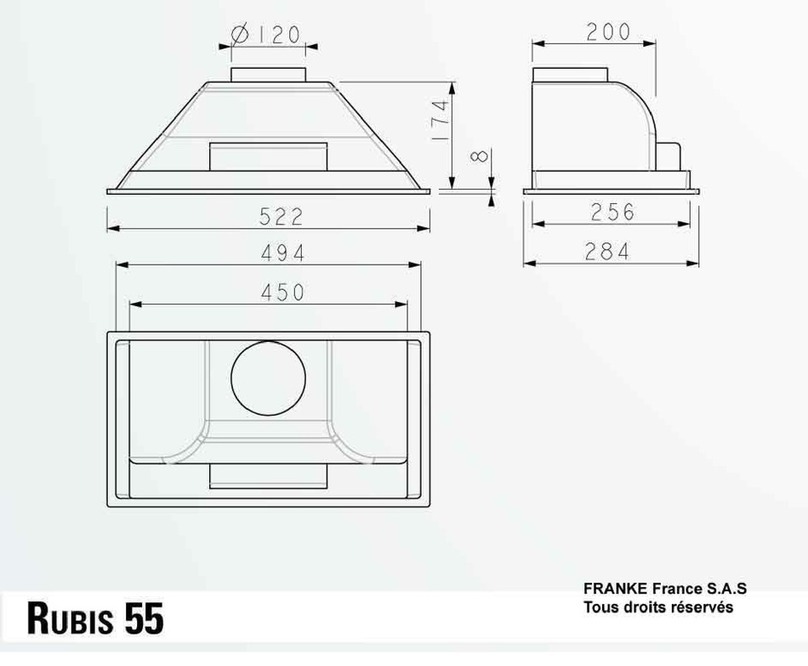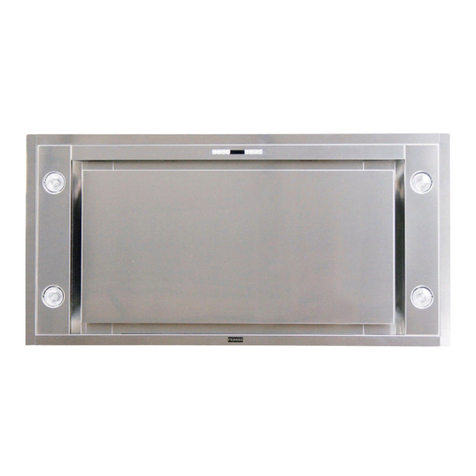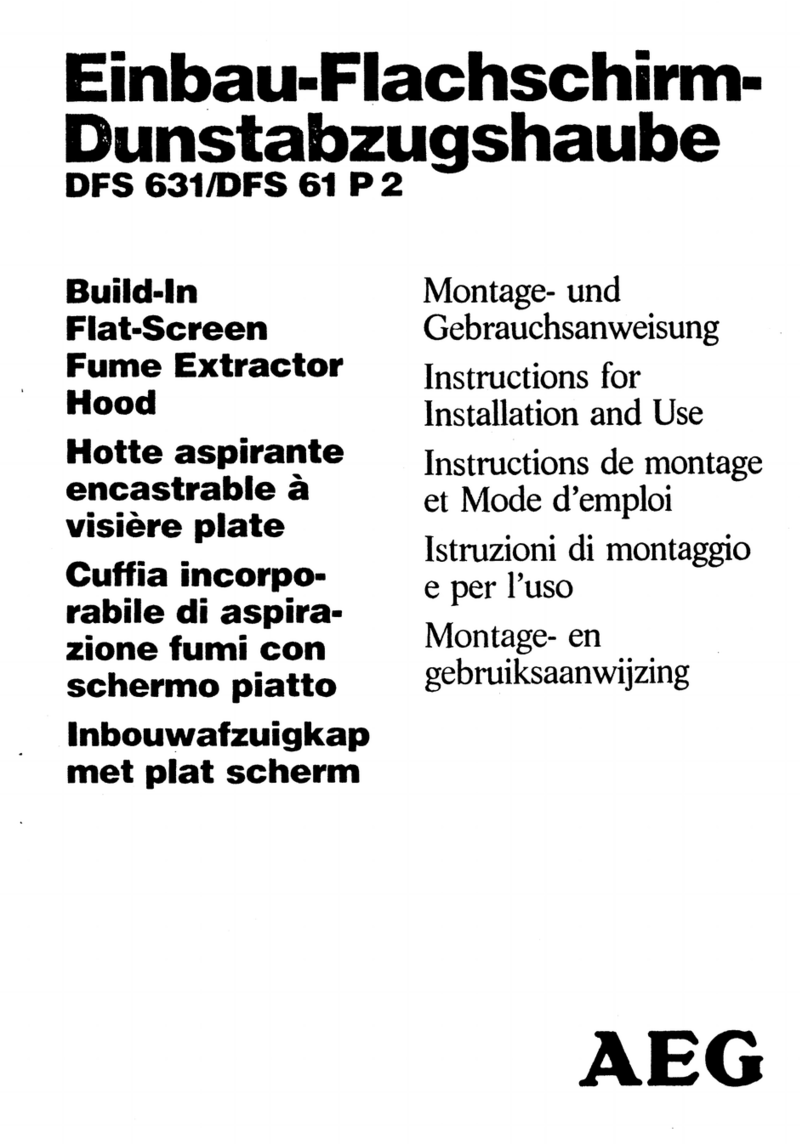7
Consult the designs in the front pages referenced in the text by
alphabet letters. Closely follow the instructions set out in this
manual.Allresponsibility, foranyeventualinconveniences,damages
or fires caused by not complying with the instructions in this manual,
is declined.
Thecookerhoodmustbe placed at a minimum distance of50cmfrom
the cooking plane for electric cookers and 65cm for gas or mixed
cookers.
Iftheapplianceisinstalledaboveagascookingdevicewithinstallation
instructions specifying a greater clearance, you must take this into
account.
Do not tile, grout or silicone this appliance to the wall. Surface
mounting only.
The hood is equipped with a top air outlet Bfor discharge of fumes to
the outside (Ducting version exhaust pipe and pipe fixing clamps
not provided).
Shoulditnotbepossibletodischargecookingfumesandvapourtothe
outside,thehood can beused inthe filter version, fitting an activated
carbon filter and the deflector F
on the support (bracket) G, fumes and vapours are recycled through
the top grille Hby means of an exhaust pipe connected to the top air
outlet Band the connection ring mounted on the deflector F(exhaust
pipe and pipe fixing clamps not provided).
The models with no suction motor only operate in ducting mode, and
must be connected to an external suction device (not supplied).
Installation - Fig. 5
Preliminary information for installation of the hood:
Disconnectthehoodduringelectricalconnection,byturningthehome
mains switch off. Expansion wall plugs are provided to secure the
hood to most types of walls/ceilings. However, a qualified technician
must verify suitability of the materials in accordance with the type of
wall/ceiling.Thewall/ceiling must be strongenough to take theweight
of the hood.
Do not tile, grout or silicone this appliance to the wall. Surface
mounting only.
Donot fix chimney flue to furniture or fly overshelves unless the
chimney flue can be easily removed, in case maintenance is
ever required.
Where foreseen remove the grease collecting panels.
Remove the grease filter/s
Do not tile, grout or silicone this appliance to the wall. Surface
mounting only. Do not fix chimney flue to furniture or fly over shelves
unless the chimney flue can be easily removed, in case maintenance
is ever required.
=
=
X
X
H
G
Assembling the chimney flue support/bracket (3 parts):
The three parts should be fixed with 4 screws, the support extension
is adjustable and should correspond to the internal width of the
telescopic chimney flue.
Assembling the deflector (only when a deflector composed of
3 parts is supplied the deflector should be only for the filter
version):
The three parts should be fixed with 2 screws, the deflector extension
is adjustable and should correspond to the width of the chimney flue
support, to which it is then fixed.
Rest the suction unit on a flat surface and thread the lower part of the
hood onto it.
Make all the electrical connections between the two parts.
Permanently fix the cooker hood to the suction group with the screws
(Fig. 4)
1. Usinga pencil, draw a line on the wall, extending up to the ceiling,
to mark the centre. This will facilitate installation.
2. Rest the drilling template against the wall: the vertical centre line
printed on the drilling template must correspond to the centre line
drawn on the wall, and the bottom edge of the drilling template
must correspond to the bottom edge of the hood: bear in mind
that, when installation is complete, the underside of the hood
mustbe at least 50cm above the cookertop in the caseof electric
cookers, and at least 65 cm above the cooker top in the case of
gas or mixed cookers.
3. Rest the support bracket on the drilling template so that it
coincides with the dotted rectangle, mark the two outer holes and
drill them, remove the drilling template, insert 2 wall plugs and fix
the hood support bracket into place using two 5x45mm screws.
4. Hang the hood on the bracket.
5. Adjust the distance of the hood from the wall.
6. Adjust the horizontal position of the hood.
7. Using a pencil mark the cooker hood permanent drill hole inside
the suction group (two drill holes are necessary for fastening).
8. Remove the hood from the bracket.
9. Drill at the point marked (Ø8mm - see operation 7).
10. Insert 2 wall plugs.
11. Rest the chimney support bracket G against the wall, touching
the ceiling. Use the support bracket as a drilling template (the
smallslot formed onthesupportmustcoincide withthelinedrawn
onthe wall asaboveoperation1)andmark 2holeswitha pencil,
drill the holes (Ø8mm), insert 2 wall plugs.
12. Fix the chimney support bracket to the wall using two 5x45mm
screws.
13. Hook the hood onto the bottom bracket.
14. Fix the hood into its final position on the wall (ABSOLUTELY
ESSENTIAL).
15. Connect a pipe (pipe and pipe clamps not provided, to be
purchased separately) for discharge of fumes to the connection
ring located over the suction motor unit.
If the hood is to be used in ducting version, the other end of the
pipe must be connected to a device expelling the fumes to the
outside. If the hood is to be used in filter version, then fix the
deflector Fto the chimney support bracket Gand connect the
other extremity of the pipe to the connection ring placed on the
deflector F.
16. Make the electrical connections.
17. Apply the chimney stacks and fasten them at the top to the
chimney support G (17b) using 2 screws (17a).
18. Slide the bottom section of the chimney down until it completely
covers the suction unit and slots into the housing provided on top
of the hood.
Replace the grease filter/s (and where foreseen the grease collecting
panels) and check that the hood is operating correctly.













